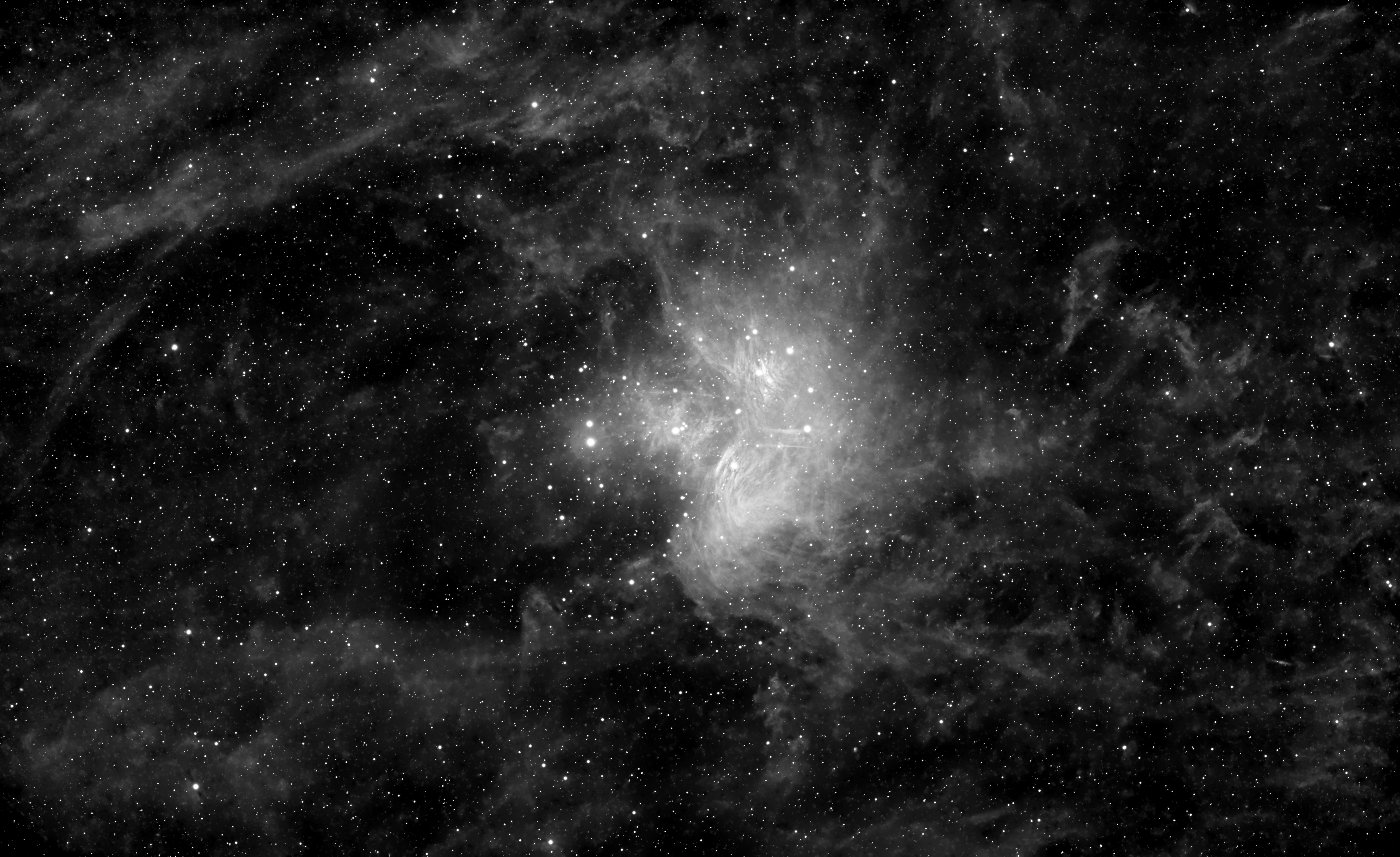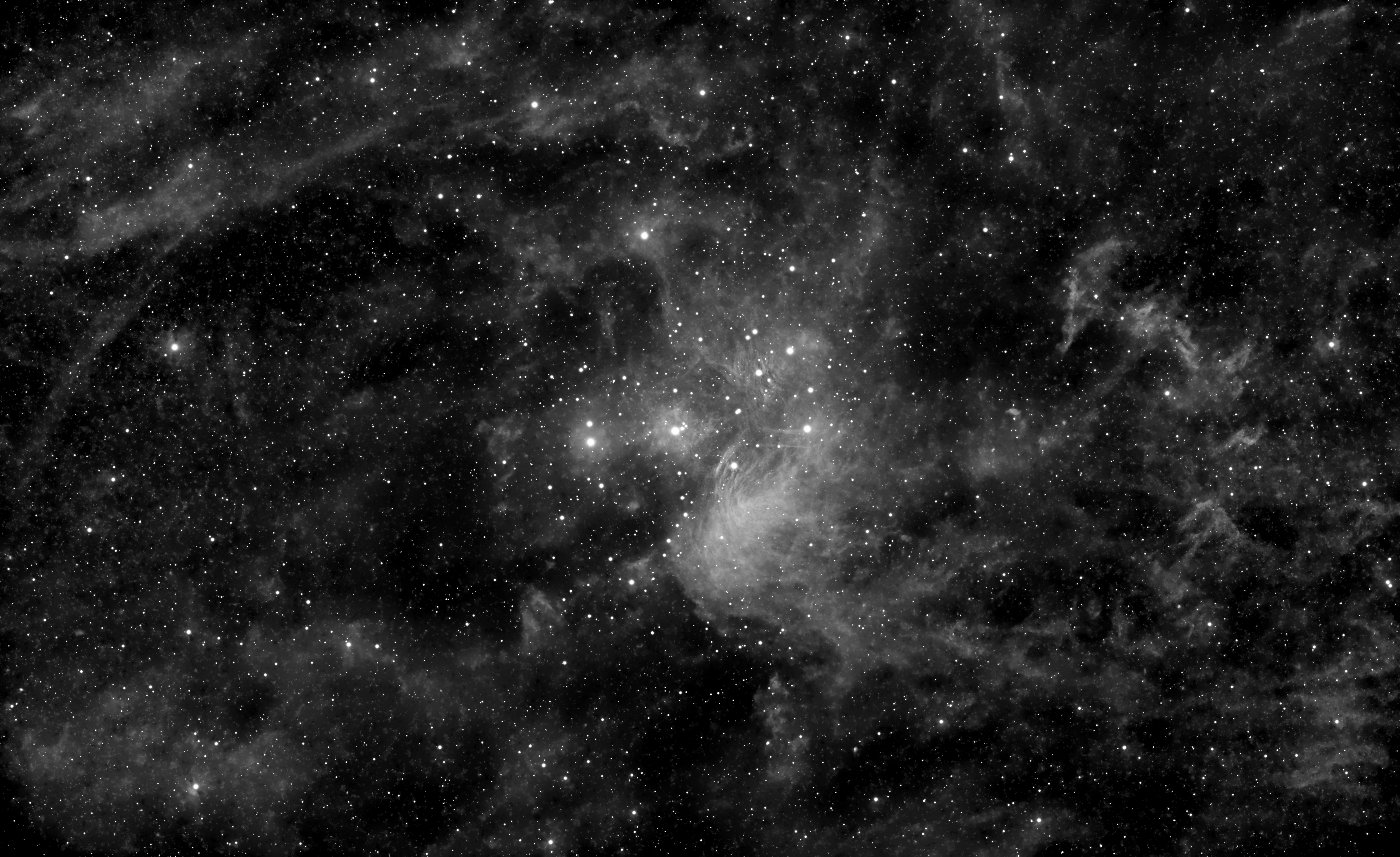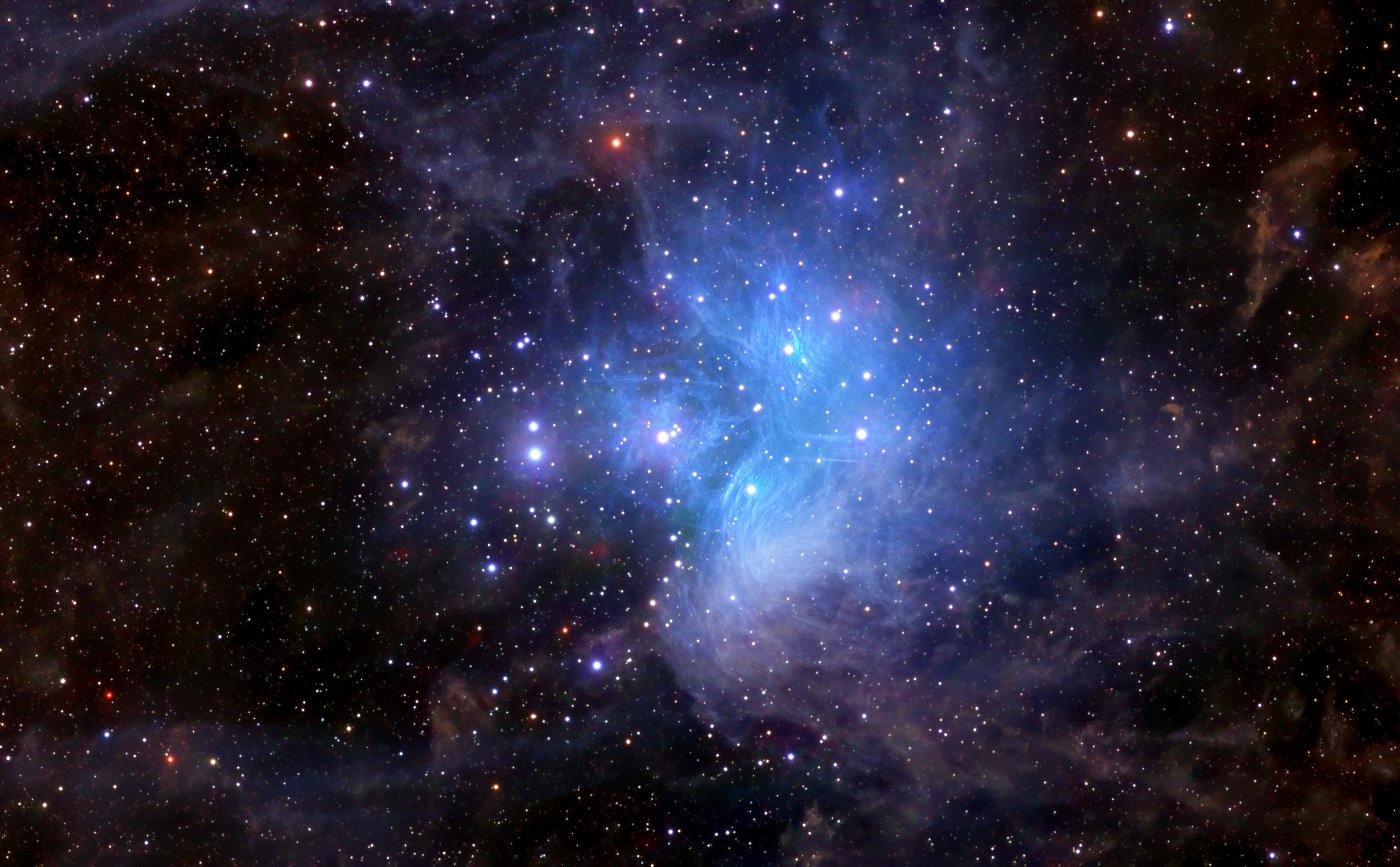Pleiades (M45)
Images below shows a 6.33° × 3.88° large view of the Pleiades, also known as M45.SDSS I'R'G'
First figure shows a color composite from SDSS I' (mapped to red), R' (mapped green) and G' (mapped blue) filters.
The Pleiades (M45) are a cluster of young blue stars in a distance of about 430 ly (Light-years). The bluish dust which scatters the light from these stars lies about 1 to 2 ly in front of them, see [1].
The nebula probably belongs to the Taurus Molecular Cloud which also extends within a distance of about 420 ly to 645 ly, see [2].
The artifacts around the bright stars are are caused by star reduction by factor 10.
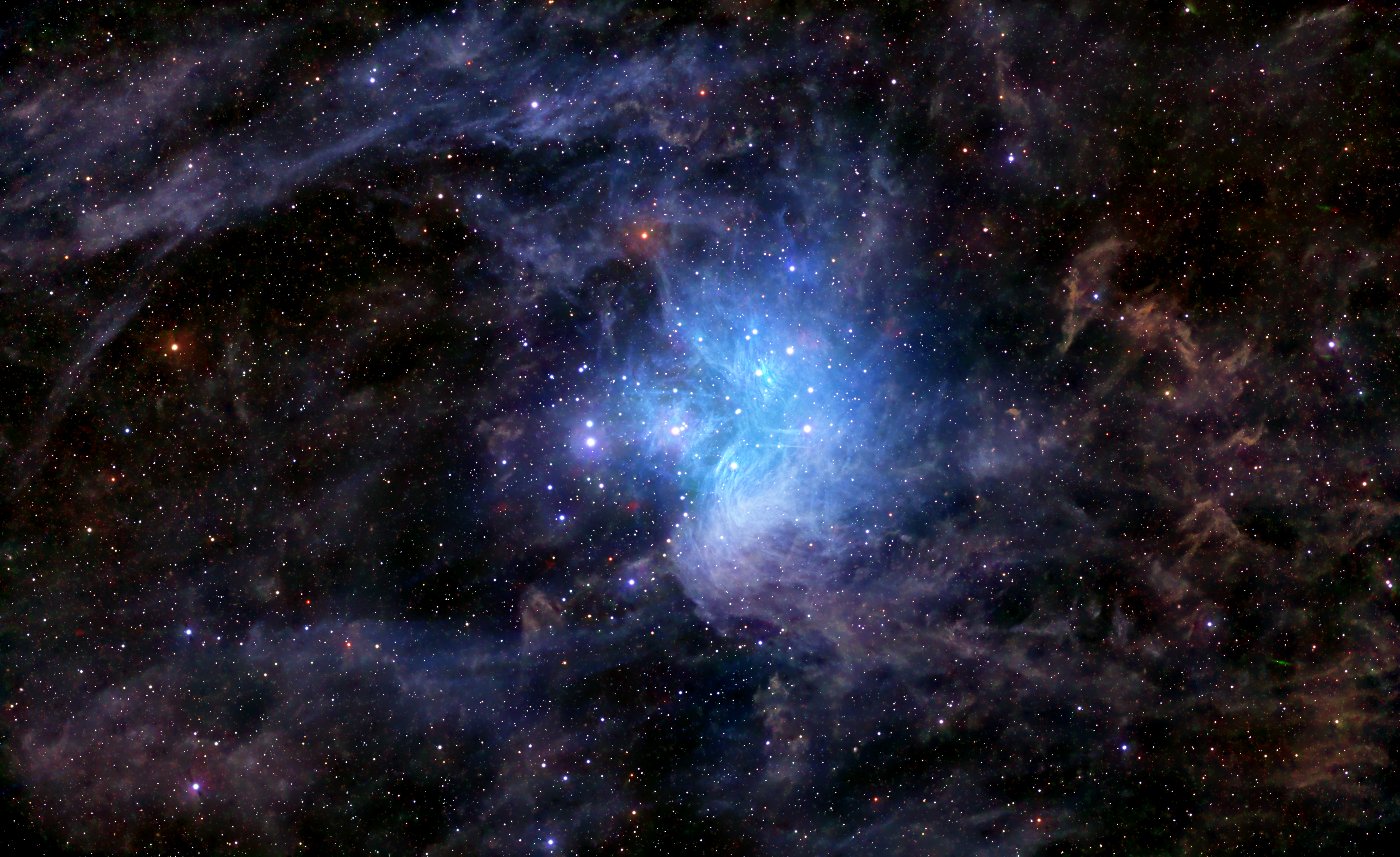
The difference between the color channel is also visualized in the following figure where the color components from the image above can be compared interactively.
Typical RGB filter sets for astronomy only cover the spectral range of the G' and R' filters, about 400nm to 700nm. The bandwidth of on-sensor color filter arrays of consumer cameras is even narrower.
The information contained in the I' channel would be lost with RGB filter.
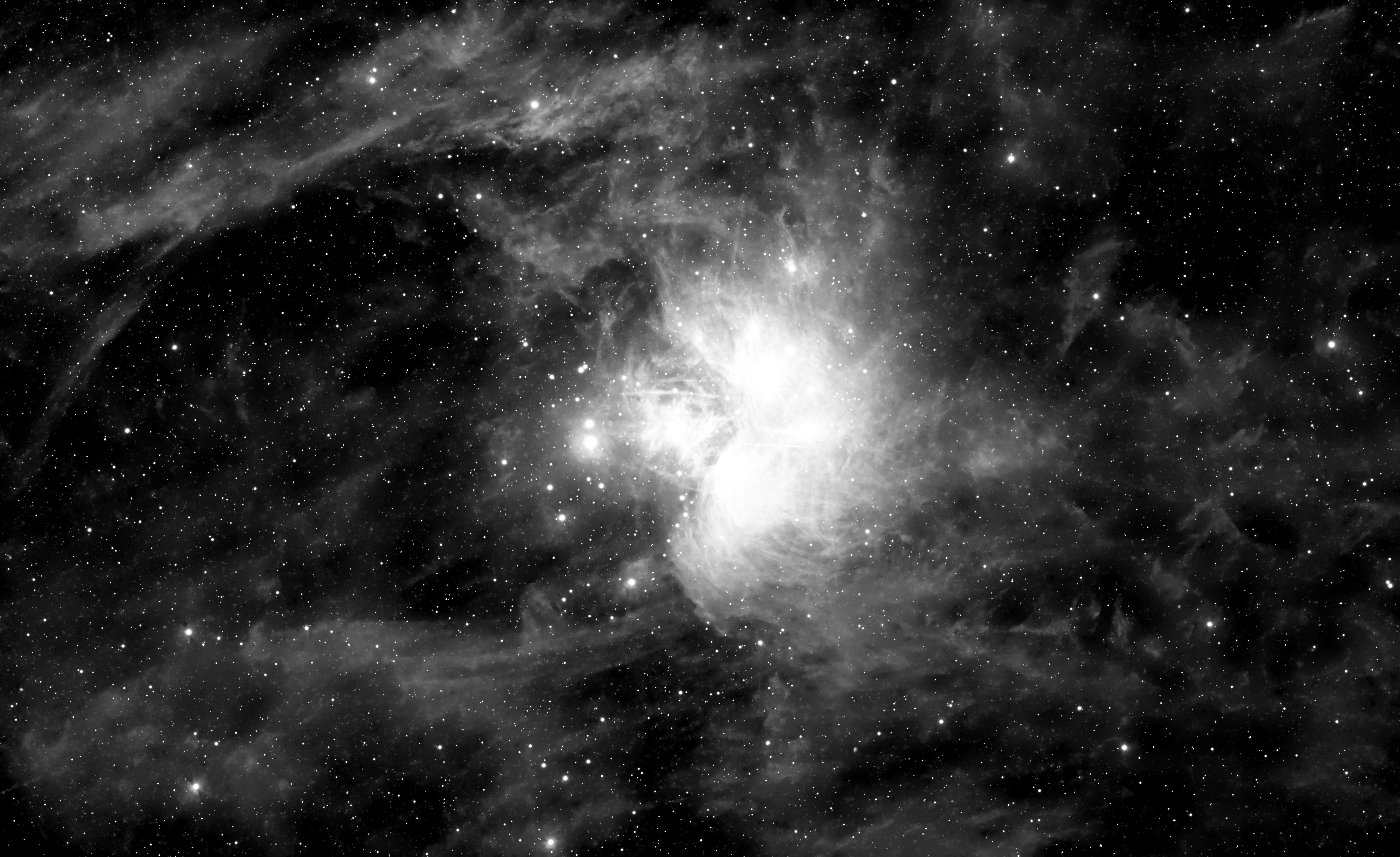
Filter: G'
(requires JavaScript)
RGB comparison
The following pictures are an attempt to compare the results from the SDSS filters with RGB shots.
Filters: RGB
The image shows a 4.2° × 2.6° large region from the picture from top of this page for which RGB data was available. This data was captured with two D=200mm Newton telescopes and Nikon D800e cameras. The resolution of the larger instrument is higher. Despite of the longer total exposure time (54.4h vs. 17h) the SNR of the RGB data is lower. (Because the RGB image is a 2×2 mosaic and the sensitivity of the QHY600L with SDSS filters is about 4 times higher than the sensitivity of the Nikon sensor with its filter array). But due to the brightness of the nebula this is not visible even at highest resolution.
The RGB data was processed in similar way as the I'R'G' data and benefits from the higher resolution. But compared to the I'R'G' data, the color contrast is poor because the information in the RGB channels is to similar.
Image data
| FOV: | 6.33° × 3.88° | ||||||
|---|---|---|---|---|---|---|---|
| Date: | 12/2021 to 01/2022 | ||||||
| Location: | Pulsnitz, Germany | ||||||
| Instrument: | 2-3 × Nikon 300mm f/2.8 AF-S | ||||||
| Camera: | 2-3 × QHY600L | ||||||
| Orientation: | North is up (exactly) | ||||||
| Scale: | 3 arcsec/pixel (at full resolution) | ||||||
| Total exposure times: |
|
Image processing
All image processing steps are deterministic, i.e. there was no manual retouching or any other kind of non-reproducible adjustment. The software which was used can be downloaded here.Image processing steps where:
- Bias correction, dark current subtraction, flatfield correction, noise estimation
- Alignment and brightness calibration using stars from reference image
- Stacking with masking unlikely values and background correction
- Star subtraction
- Denoising and deconvolution
- Color composition
- Dynamic range compression using non-linear high-pass filter
- Tonal curve correction
References
- Gibson, S.J.; Nordsieck, K.H. (2003). "The Pleiades Reflection Nebula. II. Simple Model Constraints on Dust Properties and Scattering Geometry". The Astrophysical Journal. 589 (1): 362–377.
- P. A. B. Galli 1, L. Loinard 2,3 H. Bouy 1, L. M. Sarro 4, G. N. Ortiz-León 5, S. A. Dzib 5, J. Olivares 1, M. Heyer 6, J. Hernandez 7, C. Román-Zúñiga 7, M. Kounkel 8, and K. Covey, (2019). "Structure and kinematics of the Taurus star-forming region from Gaia-DR2 and VLBI astrometry". Astronomy & Astrophysics 630: A137.
